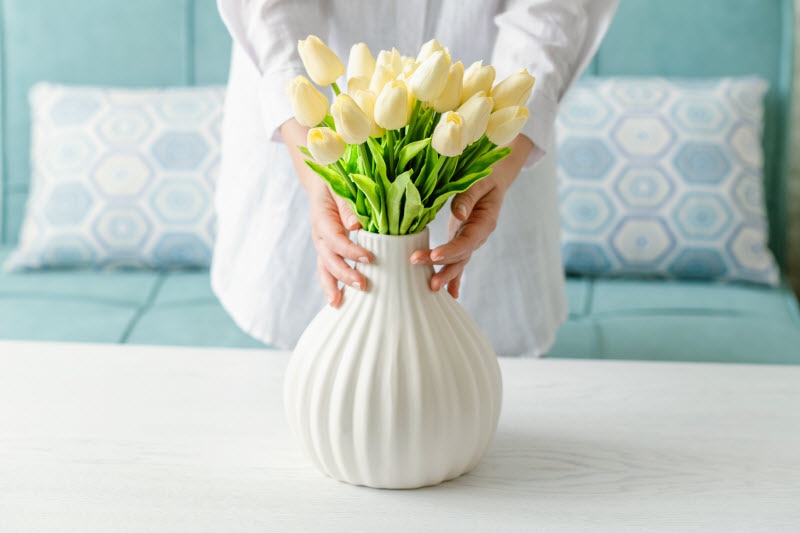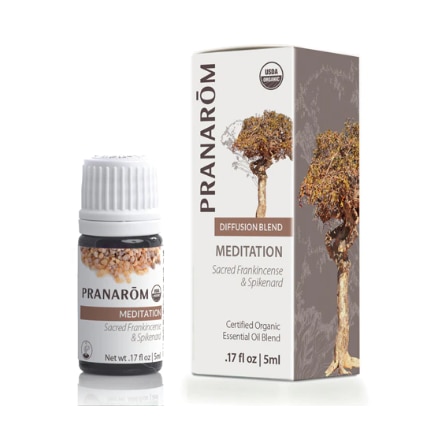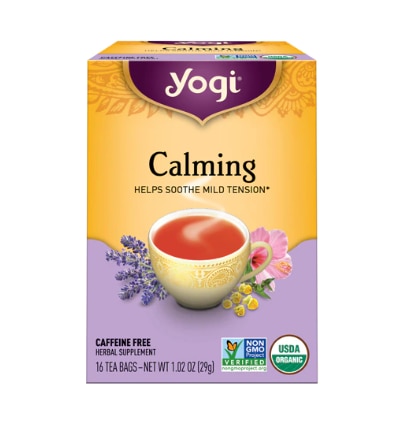It’s hard to argue with how easily flowers make people feel good. To wit: flower arrangements at weddings, magnifying the joy of the day, but also at funerals, adding joy to an otherwise dreadful day.
Turns out people who create flower arrangements gain benefits too.
“Flower arranging is a deliberate process that takes focus,” says Talia Boone, founder and CEO of Postal Petals, which delivers stemmed flowers to customers on a subscription basis — with the explicit intention of encouraging them to arrange the flowers themselves. “Just as your mind might wander while you meditate, but you focus on your breathing and a mantra to center it, flower arranging brings your focus back to the petals and the bouquet you’re creating.”
Plus, other aspects of flower arranging share the health benefits conferred from caring for plants in general. Horticultural therapy is an older and more well-established practice that incorporates trained horticultural therapists and is known to support mental and emotional well-being. Aspects of horticultural therapy, which uses gardening as a therapeutic medium, can play into flower arranging as well.
Boone, who is based in Hollywood, Calif., speaks from personal experience. She often used flower arranging as a tool to center and calm herself, and it came to help her after the coronavirus pandemic hit in 2020.
“A little over a month into covid lockdowns, I was super stressed by the uncertainty and felt like the walls in my home were closing in on me,” Boone says. “As I was looking for natural ways to ease my anxieties, flower arranging was the obvious choice.”
It worked.
“I wondered if I was the only person who found flower arranging to be so soothing,” she says. “As I started doing research on the topic, I found many articles validating my own experience that flower arranging is therapeutic.”
Several studies over the years have shown the powerful positive effects of flowers, in and of themselves, and of creating bouquets, table settings or other creations out of them.
“Flowers have immediate and long-term effects on emotional reactions, mood, social behaviors and even memory for both males and females,” notes a Rutgers University study published in the journal Evolutionary Psychology.
How to try flower arranging
Want to try flower arranging? Here are two ways to do it — though “there’s no right or wrong in flower arranging,” Boone says. “The most important thing to remember is to have fun.”
Primary inspiration: the flowers themselves
Venture into your yard or go for a walk to find flowers, or buy them at a store or subscribe to a service like Postal Petals.
“Choose the flowers that speak to you,” Boone says. “I like to start with a shape, color or texture that makes me smile.”
Looking at your lot, you might decide you want variation — or not!
“Sometimes I pick a color scheme and do a whole monochromatic arrangement of flowers of different shades of the same color,” Boone says.
You might be motivated by something other than color — scent or texture, for example. If so, let it guide you.
“Pin cushions and passion flowers have beautiful shapes and colors that delight the eyes, while jasmine and lavender have lovely scents, and rose petals and pussy willows have textures that are comforting to the touch,” Boone says. “Follow your heart.”
Primary inspiration: how and where to showcase the flowers
Maybe you have a colorful jar or a vessel you love. “Occasionally, I choose a vase first and then create an arrangement of flowers I think will look good in it,” Boone says.
Alternatively, you might want something less conventional to hold your bouquet: netting of some sort or ribbons. Of course, if you’re not using a vase, be sure to keep the stem ends wet somehow.
Maybe you know you want your flower arrangement to go in a specific room or even in a specific place in a specific room. If that’s what’s calling, let it influence the flowers you end up choosing.
Next, fine-tune your collection.
Now you get to be an artist. Maybe you want several flowers to reach high, while others stretch out. Maybe you want only a few leaves on some stems and lots on others.
“The process of trimming the flowers’ stems, pruning the leaves and caring for your arrangement all bring out the nurturer in you,” Boone says. “Flower arranging … is a multi-sensory experience of creating with living things.”
Keep in mind that other types of cuttings can be in your bouquet too; you don’t have to limit your arrangement to flowers.
Finally, revel in your creation.
“Bringing elements of nature into your home can be mood boosting the same way a walk in the woods or around the lake can be calming,” Boone says. “Nature is an instant reminder that you’re a small part of a big world full of marvels. It puts your concerns and worries into perspective.”




